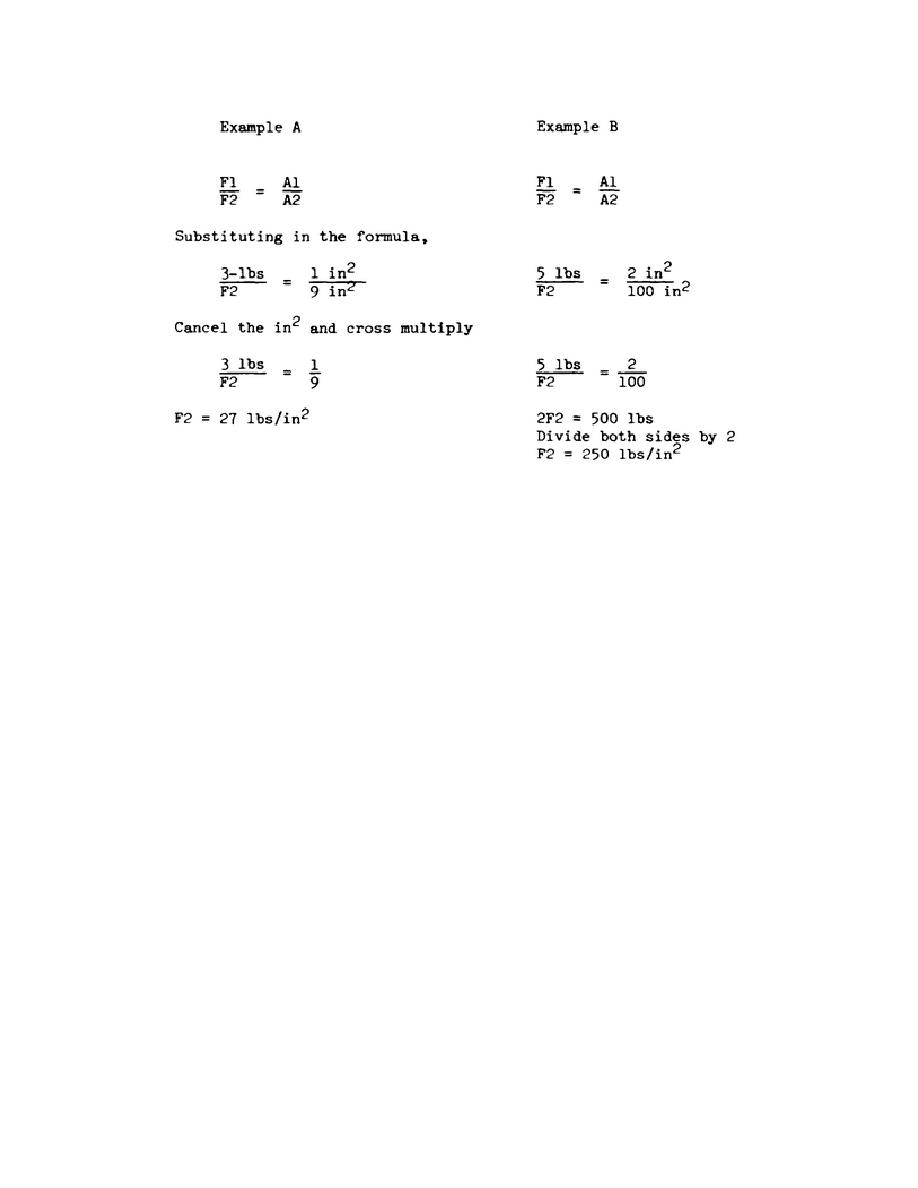
SM0486
e. The total force applied to the bottom of the movable piston in Figure 3 is
many times the force applied to the input, but the piston movement is very small.
This is true because the distances moved by the two pistons are inversely
proportional to the piston areas.
4.
Atmospheric Pressure and Vacuum. You depend on both of these when a pressure
device such as the A-1 barometer is used to calibrate altimeters. As you study the
material on atmospheric pressure and vacuum and their effects on different devices,
you should attempt to establish relationships between the following:
Force and atmospheric pressure.
Fluid pressure and atmospheric pressure.
a. When we speak of air (atmosphere) pressure, we refer to the intensity of
the force, per unit area, which air exerts on an object.
In most instances you
express pressure values as a given number if inches, centimeters, or millimeters of
mercury.
These units were derived by pouring a quantity of mercury into a glass
tube. The open end of the tube was tilted so that the mercury could be poured into
an open dish or pan as the closed end of the tube was turned to an upright
position. The mercury from the tube was emptied into the dish until its level in
the tube dropped to 30 inches (76 cm or 760 mm), as shown in Figure 4.
48



 Previous Page
Previous Page
